
Recently on Cyclingnews.com |
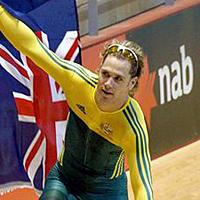
|
Benny K in the 'land that time forgot':
The Ben Kersten diary 2007
Ben Kersten is one of the world's finest and fastest track cyclists. The Australian is reigning Commonwealth Games gold medallist in the kilo, Australian champion in the sprint, kilo and keirin, and the Australian male track cyclist of the year. This year he is one of the international riders invited to Japan to attend the International Japanese Keirin school.
Follow Benny K on his journey as he learns the techniques, rules and traditions that make up Japanese keirin racing in this unique diary from 'the land that time forgot'. You can also check out Benny's own website and he is also a strong supporter of the the Illawarra Institute of Sport, from his home town of Wollongong, just south of Sydney in NSW, Australia.
July 2, 2007
Welcome to Alcatraz
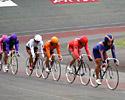
|
Japanese Keirin is a world unto its own. There are about 4000 Professional Keirin riders throughout Japan and 50 velodromes that are permitted to host Keirin Tournaments. Each velodrome is allowed to run a maximum of two tournaments per month, which tallies up to approximately 1200 tournaments held throughout Japan per annum.
To keep one's licence each registered Keirin rider must compete in at least two Tournaments per month with a maximum of three per month. Each race you are given points which are added and divided by your races to give you an average score. Every six months your average is taken and if it falls below a set limit three times in your whole career, you are suspended for life. Sayonara.
A Keirin Tournament typically runs for three days with 11 races per day, therefore a typical race has 99 Keirin riders competing in it. Each rider's Tournament locations are allocated to him by the Keirin association. This spreads the riders evenly throughout the county eliminating the possibility of all the best turning up to the same race and vice versa.
The day before a Keirin Tournament begins all the riders must arrive at the Velodrome before a set time, usually 1pm; this is called 'Zenken'. The organisers of each Keirin reimburse all the cyclists for their travel costs, Planes, Trains, and Automobiles.
Zenken
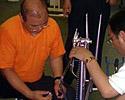
|
1) In Zenken your bicycle (jitensha) is submitted to a long series of testing in what can only be described as a Japanese motor industry production line.
There's a man for every part of the 'jitensha'. Each tests his own allocated bolt with a torque wrench and moves the jitensha along down the line. They look at scratches with magnifying lenses and study each tyre with a space telescope for five minutes. Eventually they strap your bike in the Incredible Hulk machine and try and break it, if it doesn't break, it gets a sticker.
2) Next you take your shoes and helmet for similar testing, if they are all ok you get a number.
3) You then go to the infirmary with your number to see the nurses. They take your blood pressure and heart rate. If you're not about to die you get shuffled along to the doctor to check your respiratory system. If you don't have the black lung, your all go. Simple....
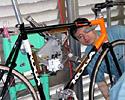
|
All phones and electronic items that can access the internet are handed in. Even electronic items that can't do this but look suspicious or advanced are also taken. This is to stop any contact with the outside world in attempts to eradicate all illicit gambling. Keirin riders are a lot like horses when it comes to gambling, only horses can't talk...
You are not searched but if you are found to have one of these items you will be suspended for two years.
The maximum penalty for illicit racing or accepting a bribe in Japan carries a three year prison sentence..
You are now in Alcatraz, I mean a Keirin Tournament: Most velodromes have dormitories attached so once you're within the walls of the track for Zenken there is no contact with anyone from the outside world. The walls of the track are high and the windows of your rooms are often fogged glass so you can't see out.
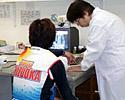
|
Some of the dorms aren't located at the track, so two special busses are needed. They load up with the riders behind the walls only once each day. The gates open and it's no stops to the dormitory. The dorms are owned and operated by the Japanese Keirin and are only for this purpose, high gates and walls surround them also.
The problem with some dorms not being at the track is the bus schedule. As I said it's not a very flexible form of transport. It goes when it goes, that happens to be the first thing in the morning so the riders with the earlier races can get there in time, that is about 9 am. We race at four or 5pm..
That's a lot of waiting and that is done in the waiting room...
Make yourself comfortable.
Photography
For a thumbnail gallery of these images, click here
Images by Ben Kersten
- Testers measure everything on the bikes in Zenken
- The bikes get a going over for any sort of dangerous problems
- The big green machine is used to test the bikes for stress problems
- Riders get medical checks and if they pass, a number
- The race is on!
